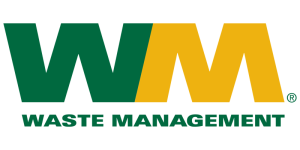How relevant will geotagging images be for SEO in 2024?
In the ever-evolving landscape of search engine optimization (SEO), staying ahead of the curve is crucial for businesses vying for digital visibility. As we cast our eyes towards 2024, one emerging trend poised to make waves in the SEO domain is the practice of geotagging images. JEMSU, a leader in the digital advertising space, has been closely monitoring the trajectory of this technique and its potential implications for businesses aiming to optimize their online presence.
Geotagging, the process of adding geographical identification metadata to various media, is becoming increasingly relevant in SEO strategies. This metadata includes coordinates like latitude and longitude, city, or even specific address data. As search engines become more sophisticated and users more location-aware, the importance of geotagging for enhancing local SEO cannot be understated. JEMSU recognizes that in 2024, this practice could be a game-changer for businesses seeking to connect with their local audience.
Why might geotagging images be a pivotal SEO strategy in the near future? The answer lies in the personalized search results that have become the hallmark of modern search engines. With a significant portion of online searches being location-specific, JEMSU points out that adding geotags to images can significantly improve a business’s chances of appearing in relevant local searches. As we delve into the potential impact of geotagging on SEO in 2024, it’s clear that JEMSU’s expertise in search engine marketing is at the forefront of adapting to and implementing these cutting-edge techniques for their clients’ success.
Table of Contents
1. Impact of Geotagging on Local SEO
2. Geotagging and Image Search Rankings
3. Evolution of Search Engine Algorithms and Geotagging
4. Geotagging Integration with Social Media and SEO
5. User Experience and Geotagged Images in Search Results
6. The Role of Mobile Search and Location-Based Services in Geotagging
7. FAQs
Instant SEO Checker + Score & Report
Enter the URL of any landing page to see how optimized it is for one keyword or phrase...
Impact of Geotagging on Local SEO
The significance of geotagging for local SEO cannot be overstated, especially as we move towards 2024. Geotagging, the process of adding geographical identification metadata to various media such as photographs, videos, and websites, has become a powerful tool for businesses aiming to boost their online visibility within specific regions. At JEMSU, we understand that for companies looking to dominate local search results, implementing geotags on images can be a game-changer.
Local search engine optimization (SEO) is all about increasing a business’s visibility in geographically related searches. When images are geotagged, they contain information about the exact location where they were taken, which helps search engines to associate these images with local search queries. This can be particularly effective for businesses that rely heavily on local foot traffic, such as restaurants, retail stores, and service providers. By strategically geotagging images on their websites and in online directories, these businesses can significantly improve their chances of appearing in the search results when potential customers are looking for local options.
Take, for example, a Denver-based restaurant looking to attract more patrons. By working with JEMSU, the restaurant can have its images geotagged with the precise location of its establishment. When foodies search for “best pizza in Denver,” the search engine can pull up relevant images from the restaurant, increasing the likelihood of these searchers visiting the business. This is akin to placing a signpost in the digital world that guides customers directly to the restaurant’s doorstep.
Moreover, the use of geotagged images also caters to the growing trend of “near me” searches, which have seen a significant uptick in recent years. According to Google, searches for local services with the qualifier “near me” have grown by over 500% over the past few years. This underscores the importance of local SEO and the role geotagging plays in ensuring a business remains relevant and easily discoverable.
JEMSU emphasizes the importance of accuracy and consistency when geotagging images for SEO purposes. Just as a navigator relies on precise coordinates to reach a destination, search engines rely on the accuracy of geotags to deliver the most relevant local search results. Ensuring that every image’s geotag accurately reflects the business’s location is crucial for maintaining the integrity of local SEO efforts.
In conclusion, as we look towards the future of SEO in 2024, it is clear that geotagging will continue to be an essential element of local SEO strategies. Businesses that effectively leverage geotagged images will have a competitive edge, as they will be more visible to potential customers who are actively seeking out local goods and services. With the expert guidance of agencies like JEMSU, companies can navigate the ever-evolving landscape of digital marketing and harness the power of geotagging to achieve their SEO objectives.
Google Ads Success Example
The Challenge: The Challenge: Increase new dental patients with better Google Ads campaigns.
Geotagging and Image Search Rankings
Geotagging can significantly influence image search rankings, a facet of SEO that shouldn’t be underestimated, particularly in the coming years. As a digital advertising agency, JEMSU recognizes the importance of image optimization in search engine marketing strategies. By incorporating geographical metadata within images, businesses can enhance their visibility for location-based queries. This is particularly true as search engines like Google continue to refine the way they index and serve up images in search results.
Let’s take an example to illustrate the impact of geotagging on image search rankings. A local restaurant in Denver, which has geotagged images of its dining area and dishes, is more likely to appear in search results when a potential customer searches for “cozy dining spots in Denver” or “best pasta dish in Denver.” Here, geotagging acts as a contextual signal to search engines, indicating the relevancy of the image to the searcher’s location-based query.
Moreover, statistics show that searches with local intent are significantly higher on mobile devices. As JEMSU strategizes for clients, emphasis is placed on optimizing images for these mobile searches, where geotagging can play a crucial role. For instance, a study by Google revealed that “near me” mobile searches had increased by over 500% over a few years, indicating a trend that is likely to persist.
An analogy that fits well with the concept of geotagging and image search rankings is that of a library organizing books by not only subject but also by the region of publication. Just as a reader might find it easier to locate a book about Roman history in the Italy section, a geotagged image helps search engines categorize and present images in a way that is more relevant to the searcher’s geographic query.
JEMSU harnesses the power of geotagging for clients by ensuring that images are not only high-quality and relevant but also geographically tagged to improve local search visibility. With the ongoing evolution of search engine algorithms that increasingly prioritize local content, geotagging becomes an indispensable tool in the arsenal of search engine marketing. As we move towards 2024, it is expected that the precision and importance of geotagging will only rise, as both users and search engines seek more personalized and location-specific search results.
Evolution of Search Engine Algorithms and Geotagging
As digital marketing experts at JEMSU, we recognize the significance of adapting to the dynamic nature of search engine algorithms. The continuous evolution of these algorithms is a pivotal factor in the relevance of geotagging images for SEO in 2024. Search engines such as Google frequently update their algorithms to refine how they index, interpret, and rank content. These updates often aim to enhance the user experience by providing more accurate and relevant search results based on a variety of ranking signals.
Geotagging, which embeds geographical information into images, can influence how content is discovered and displayed in search results. As algorithms become more sophisticated, they are likely to place greater emphasis on the context and relevance of a user’s location. For instance, if a user searches for “best coffee shop,” a search engine might prioritize geotagged images from local coffee shops, considering the searcher’s current location. In this way, JEMSU understands that the potential impact of geotagging is substantial for businesses targeting local audiences.
One analogy to consider is that of a treasure map. If search engine algorithms are the map, then geotags are the “X” that marks the spot. They help search engines to locate and serve the most relevant content treasure to users based on their location. As algorithms evolve, the precision of this “X” can become even more accurate, making geotagging a more valuable tool for SEO.
Moreover, with advancements in artificial intelligence and machine learning, search engines are likely to become better at interpreting the context of images and their geotags. This could lead to a scenario where geotagged images not only boost visibility for local searches but also contribute to the semantic understanding of the content by search engines.
It is important for businesses like those partnering with JEMSU to stay informed about these advancements. By doing so, they can ensure their geotagging efforts are aligned with the latest SEO best practices. For example, a business might feature geotagged images of their storefront, products, or events to signal relevance to both search engines and potential customers searching within their vicinity.
In conclusion, while the future of search engine algorithms is not set in stone, it’s clear that geotagging remains an important consideration for SEO strategies. As experts in the field, JEMSU will continue to monitor these developments, helping businesses leverage the power of geotagging to maintain a competitive edge in the digital landscape.
SEO Success Story
The Challenge: The Challenge: Design an SEO friendly website for a new pediatric dentist office. Increase new patient acquisitions via organic traffic and paid search traffic. Build customer & brand validation acquiring & marketing 5 star reviews.
Geotagging Integration with Social Media and SEO
As JEMSU looks ahead to the landscape of SEO in 2024, the integration of geotagging with social media is expected to continue to play a crucial role in digital marketing strategies. With the proliferation of social media platforms that encourage location tagging, such as Instagram and Facebook, businesses have a golden opportunity to enhance their local SEO through geotagged content. When a user geotags a post or image with a specific location, it not only becomes searchable within that platform but also adds a layer of location-specific data that search engines can index. This synergy between social media and SEO helps businesses tap into a more targeted audience, effectively narrowing down the reach to potential customers in close proximity.
Consider, for example, a local restaurant that encourages patrons to geotag their dining experience on Instagram. Each tagged post acts like a beacon, signaling to the search engines that this particular establishment is a point of interest within that geographical area. As users interact with these posts—liking, sharing, or commenting—the social signals contribute to the restaurant’s online visibility and relevance in local search results. JEMSU understands that user-generated content, such as customer reviews and images tagged with a business’s location, can significantly influence a brand’s search engine ranking and overall online presence.
Furthermore, as social media platforms continue to evolve and prioritize location-based content, the role of geotagging in SEO strategy becomes even more pronounced. A notable analogy would be to think of geotagging as the digital equivalent of dropping pins on a map, with each pin representing a social interaction or endorsement for a business. The more pins that surround a business, the more likely it is for that location to stand out on the map—or in this case, on search engine results pages.
In the coming years, JEMSU anticipates that the importance of integrating geotagging with social media will only intensify. As more individuals rely on social media and location-based recommendations for their everyday decisions, the businesses that successfully leverage geotagged content will likely see a significant boost in their local search rankings and overall online discoverability. By staying at the forefront of these trends, JEMSU positions its clients to capitalize on the evolving interplay between geotagging, social media, and search engine optimization.
Jemsu has been a great asset for us. The results have grown at strong positive linear rate. They have been extremely accessible, flexible, and very open about everything. Natalya is a star example of how to work with your accounts to drive them forward and adjusts to their quirks. Jaime is able to clearly communicate all of the work that is being done behind the scenes and make sure that all of my team is understanding.
I couldn’t be more pleased with my JEMSU Marketing Team!
Julia, Tamara, Joelle and Dally have exceeded my expectations in professionalism, creativity, organization, and turn around time with my Social Media Management project.
I have thoroughly enjoyed sharing my journey with this team of empowered women!
Thank you JEMSU! Your team designed and launched my new website, and developed strategies to drive traffic to my site, which has increased my sales. I highly recommend your Website & SEO Agency!
Jemsu has always been professional and wonderful to work with on both the SEO and website design side. They are responsive and take the time to explain to us the complicated world of SEO.
Jemsu is an excellent company to work with. Our new website blows away our competition! Unique, smooth, and flawless. Definite wow factor!
The folks at JEMSU were excellent in designing and launching our new website. The process was well laid out and executed. I could not be happier with the end product and would highly recommend them to anyone.
Jemsu is a great company to work with. Two prong approach with a new site and SEO. They totally redesigned my website to be more market specific, responsive, and mobile friendly. SEO strategy is broad based and starting to kick in. My marketing will also be adding Facebook and Google ads in the coming weeks. Thanks for your all you hard work.
JEMSU has wworked with our team to create a successful campaign including incorporating an overall rebranding of our multiple solutions. The JEMSU team is embracing of our vision and responds timely with life of our ideas.
JEMSU is great company to work with. They listen & really work hard to produce results. Johnathan & Sasha were such a big help. If you have a question or concern they are always there for you.
I would definitely recommend them to anyone looking to grow their company through adwords campaigns.
Jemsu have exceeded our expectations across all of our digital marketing requirements, and I would recommend their services to anyone who needs expertise in the digital marketing space.
JEMSU was able to quickly migrate my site to a new host and fix all my indexation issue. I look forward to growing my services with JEMSU as I gain traffic. It’s a real pleasure working with Julian and Juan, they’re both very professional, courteous and helpful.
JEMSU is incredible. The entire team Is professional, they don’t miss a deadlines and produce stellar work. I highly recommend Chris, Rianne, and their entire team.
We’ve been working with JEMSU for about five months and couldn’t be happier with the outcome. Our traffic is up and our leads are increasing in quality and quantity by the month. My only regret is not finding them sooner! They’re worth every penny!
User Experience and Geotagged Images in Search Results
The user experience (UX) is a pivotal aspect of SEO that cannot be understated, and this is where JEMSU’s expertise can make a significant impact. As search engines evolve, they increasingly prioritize content that provides value and relevance to the user. In this context, geotagged images play a crucial role by enhancing the search experience through localization and personalization.
When images are geotagged, they carry additional context that can help search engines understand not just what is in the image, but where it was taken and how it relates to a particular location. For instance, a search for “best coffee shops” would not only yield images of coffee cups but, thanks to geotagging, could show the user pictures of coffee shops nearby. This added layer of relevance greatly improves user satisfaction as it connects them with content that is not only topically relevant but also geographically specific.
JEMSU recognizes that in the realm of digital marketing, user experience is akin to a first impression in a face-to-face meeting; it can be the difference between engaging a potential customer or losing them to a competitor. A study by Forrester Research illustrates this by reporting that a well-designed user interface could raise a website’s conversion rate by up to 200%, and a superior UX design could yield conversion rates up to 400%. This is reflective of the power that UX holds in the digital domain.
Furthermore, the incorporation of geotagged images in search results can be compared to a knowledgeable local guiding a tourist to hidden gems in a city. The user feels understood and catered to, which fosters a deeper connection with the search engine and, by extension, the websites it recommends. By leveraging geotagging, businesses can provide their audience with a personalized virtual tour of their offerings, making the search experience more intuitive and engaging.
As an example, consider a user planning a trip to Paris looking for “art galleries in Montmartre.” With geotagged images, search engines can display galleries in that specific neighborhood, show images from recent exhibitions, and provide a visual preview of the galleries’ interiors or featured art. This kind of targeted content, which JEMSU helps businesses to optimize, not only satisfies the user’s immediate query but also encourages deeper exploration, which is beneficial for both the user and the businesses featured in search results.
In summary, as we look towards 2024, the role of geotagged images in enhancing user experience is set to become increasingly significant. JEMSU is at the forefront of integrating geotagging into SEO strategies to ensure that clients not only keep up with the evolving digital landscape but also provide an unmatched user experience that drives engagement and conversions.
SEO Success Story
The Challenge: Increase dent repair and body damage bookings via better organic visibility and traffic.
The Role of Mobile Search and Location-Based Services in Geotagging
At JEMSU, we understand that the role of mobile search and location-based services in geotagging is becoming increasingly significant. With the majority of internet users now accessing the web via smartphones, the convenience of mobile search has made it the primary method of information discovery. In fact, statistics show that mobile searches have surpassed desktop searches, with mobile devices accounting for over 60% of all searches worldwide.
The rise of mobile search goes hand in hand with location-based services, which have transformed the way users interact with search engines. When users search for businesses, products, or services, search engines prioritize results that are geographically relevant to the user’s current location. This means that geotagging images can significantly improve visibility in location-specific searches, allowing businesses to target a more geographically relevant audience.
Consider the analogy of a lighthouse guiding ships to shore; geotagged images act as beacons that lead potential customers to a business’s digital doorstep. When a user’s search query includes location-based intent, such as “coffee shops near me,” a geotagged image can signal search engines to highlight a local coffee shop that has optimized its images with relevant geographical data. This makes it more likely for the business to appear prominently in search results, directing the user to their location.
Examples of the effectiveness of geotagging in mobile search are abundant, particularly for local businesses. A restaurant that geotags images of its dishes may appear in the image section of search results when a user searches for food options in the area. This visual cue can be a powerful motivator for users to visit the restaurant.
At JEMSU, we recognize the importance of integrating geotagging into our clients’ SEO strategies. By leveraging the synergy between mobile search and location-based services, we help businesses enhance their online visibility and attract more foot traffic from local customers. As we look toward 2024, the relevance of geotagging in SEO is poised to grow even further, making it a crucial component for businesses aiming to capitalize on the ever-increasing mobile search trends.
FAQS – How relevant will geotagging images be for SEO in 2024?
1. **What is geotagging and how does it affect SEO?**
Geotagging refers to the process of adding geographical information to various media in the form of metadata. This information usually consists of latitude and longitude coordinates. In terms of SEO, geotagging can help search engines understand the relevance of content to specific locations, potentially improving visibility for location-based search queries.
2. **Will geotagging images still be relevant for SEO in 2024?**
As local search continues to grow and evolve, geotagging is expected to remain relevant for SEO in 2024. With advancements in search algorithms and the increased importance of personalized and location-specific search results, geotagging could play a crucial role in enhancing the local relevance of images and content.
3. **How can I geotag images for my website?**
To geotag images for your website, you can use software or online tools that allow you to add GPS coordinates to the image’s metadata. Some image editing software like Photoshop also offers the ability to add location data. Remember to save the geotagged image and upload it to your website with appropriate alt text.
4. **Do all search engines use geotagging for SEO?**
Major search engines like Google and Bing use geotagging as one of many signals for determining the relevance of content to particular geographic locations. However, not all search engines may prioritize geotagging in the same way.
5. **Is geotagging more important for certain types of businesses or industries?**
Yes, geotagging is particularly important for local businesses or those targeting a specific geographical area, such as real estate, tourism, and local services. For businesses that rely on foot traffic or serve specific communities, geotagging can improve local search visibility.
6. **Can geotagging images improve my website’s overall domain authority?**
Geotagging alone may not directly improve your website’s overall domain authority, but it can enhance the local SEO aspects of your site. This, in turn, could contribute to a more robust SEO strategy that indirectly strengthens domain authority over time.
7. **What are the risks of geotagging images for SEO?**
The primary risk of geotagging images is privacy concerns, especially if the images contain sensitive locations. Additionally, incorrect geotagging can lead to confusion for users and search engines, potentially harming your site’s credibility.
8. **Is geotagging relevant for mobile SEO?**
Yes, geotagging is highly relevant for mobile SEO since mobile users are often looking for information on the go and rely heavily on location-based search results. Optimizing images with geotags can improve visibility in mobile search results.
9. **Should I geotag all images on my website or only specific ones?**
It’s advisable to geotag only those images that are relevant to specific locations, such as store fronts, local landmarks, or location-based events. Overusing geotagging on irrelevant images might dilute its effectiveness.
10. **How can I track the impact of geotagging on my SEO performance?**
You can track the impact of geotagging on SEO performance by monitoring your website’s analytics for improvements in traffic from local search queries. Tools like Google Analytics and Google Search Console can help you see how users are finding your site and if there’s an increase in engagement with your geotagged content.
SEO Success Story
The Challenge: Increase new dental patients with better organic visibility and traffic.















